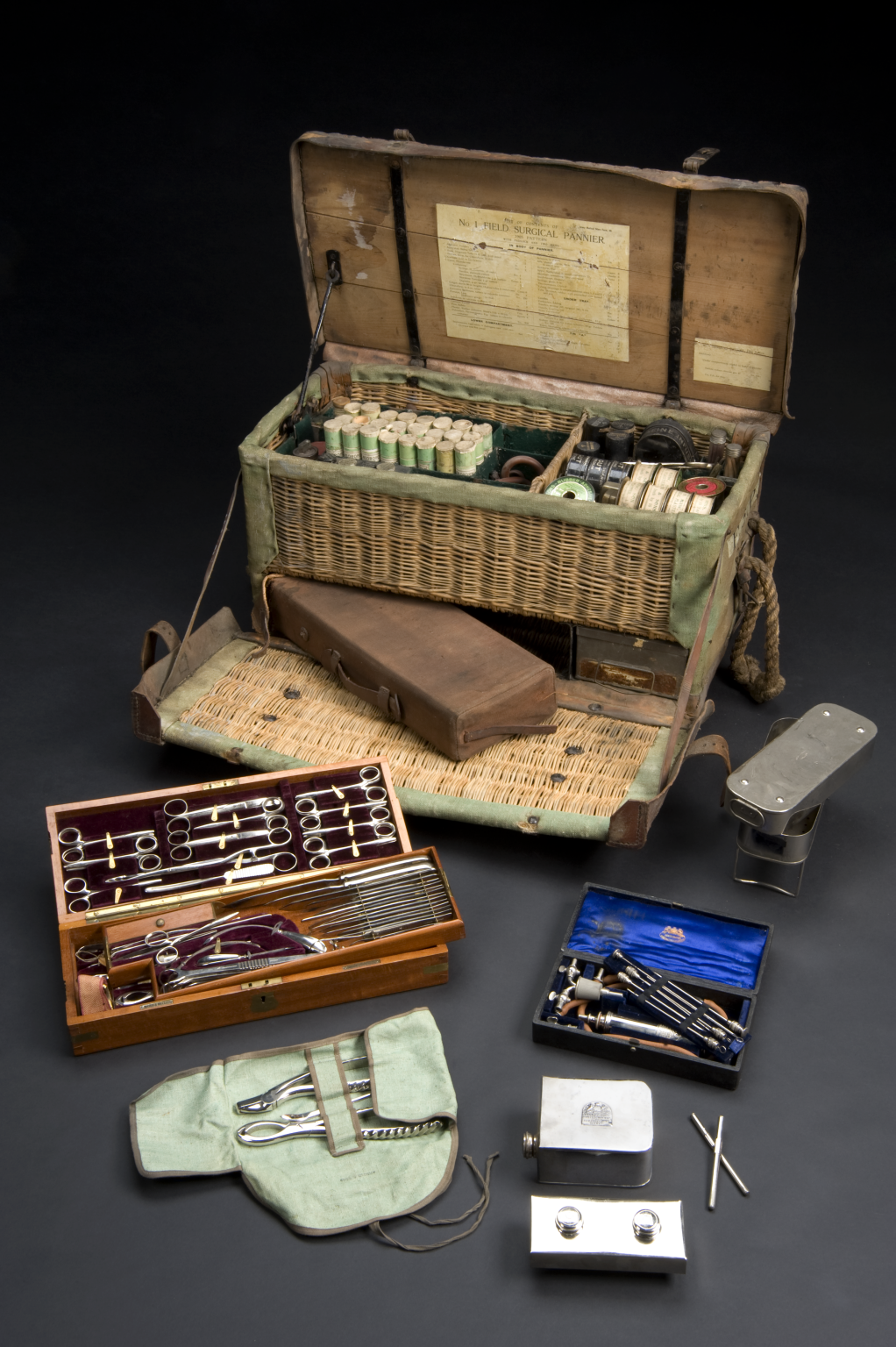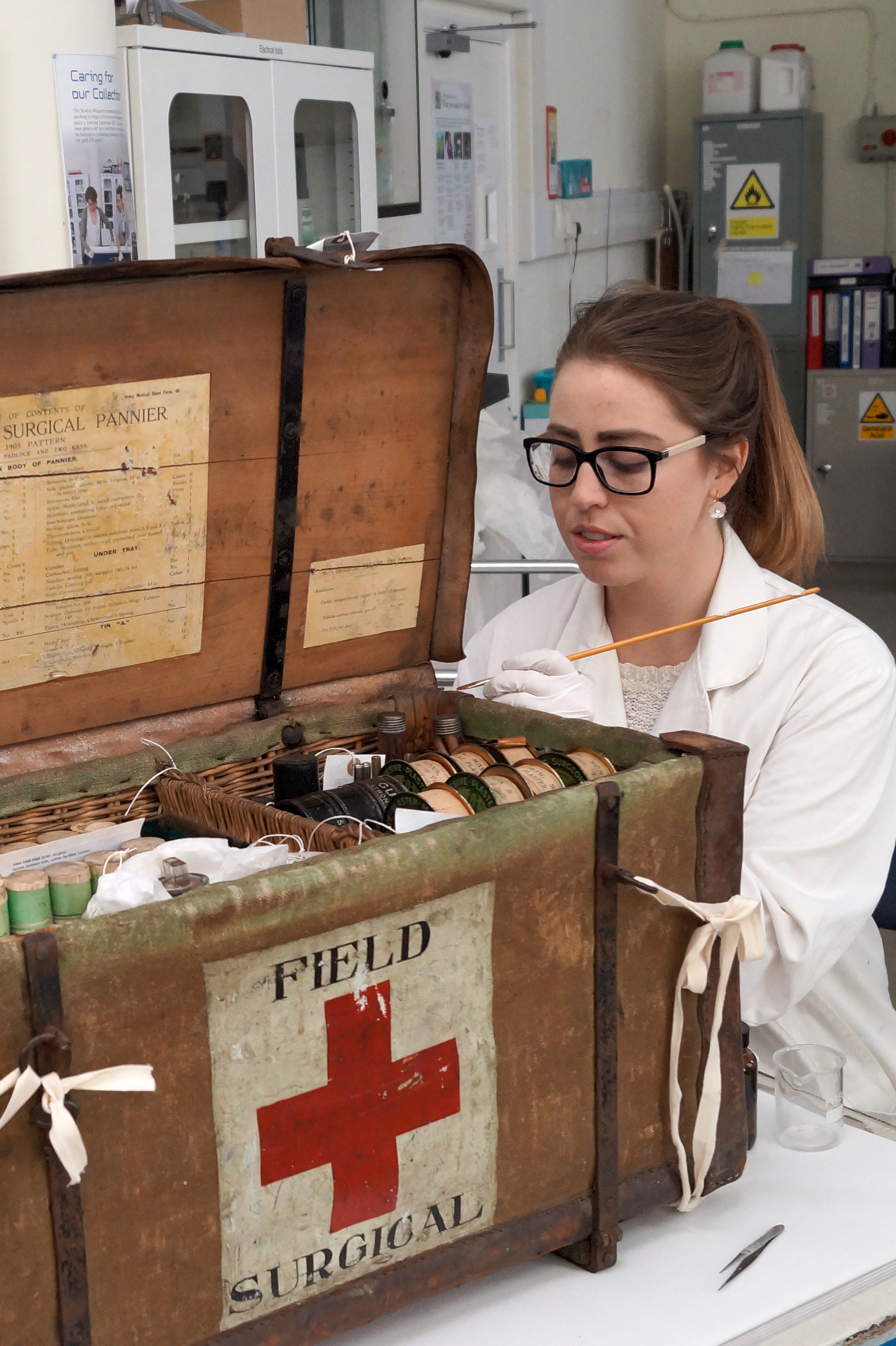As a member of the conservation team that has cleaned, documented and repaired items for the Wounded: Conflict, Casualties and Care exhibition, I’ve become acquainted with a range of fascinating objects used during the First World War.
Among those I readied for display, my favourite is the field surgical pannier set, which was made in Britain in 1905 and would have been used in field hospitals near the front line.
I particularly like the pannier set because of the many remarkable smaller objects – over 100 – inside the case. They include instruments used to open up the body and stitch wounds, as well as mundane items such as bandages and plasters. There’s also a saline infusion apparatus that was used to wash wounds, dilute drugs and provide a substitute for blood plasma.

The interior of the pannier and the items inside were treated extensively last year by Louise Stewart Beck, who worked on almost all the objects going on display.
However, the exterior – specifically the pannier’s leather components – also needed conservation. And that’s where I came in.
My task involved documenting the pannier’s condition, cleaning it, repairing certain areas where the leather was lifting and tearing, and stabilising spots on the surface that were crumbling.
Parts of the leather were suffering from ‘red rot’, a form of degradation – not actually rot, despite the name – that occurs in vegetable tanned leathers from the late 1800s and early 1900s. It usually appears as a reddish colour and a crumbling surface, and results from high temperatures and high humidity. To fix the problem I used a ‘consolidant’ to treat the surface locally, which helped to stop the crumbling and stabilise the pannier for the future.
Because of its age and how it was used, other areas of the leather – mostly the bottom edges and corners – had split and were lifting from the wicker interior. The location of the damage and the reduced flexibility of the material made this one of the trickier parts of the job.

In some cases the treatment was as straightforward as sticking down the leather with an adhesive, but for other sections that were fragile and unable to bend I had to resort to humidification. Where the leather needed extra support to reattach to the wicker, I used Japanese tissue paper colour matched to the brown leather as a kind of patch.
Treating the surgical pannier set was both interesting and informative. I look forward to seeing it on display in the exhibition, and I’m sure others will enjoy learning from it just as I have.
Vanessa Applebaum is an intern in the conservation team at the Science Museum.
Wounded: Conflict, Casualties and Care opens at the Science Museum on 29 June 2016. For more information visit sciencemuseum.org.uk/wounded.